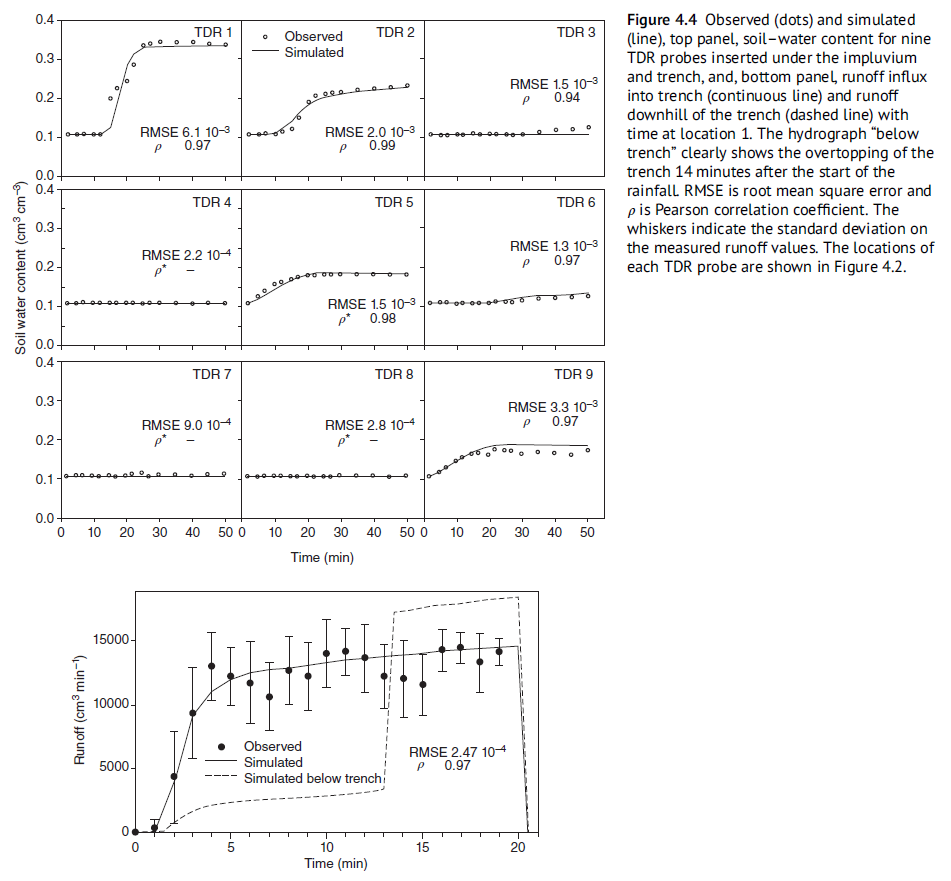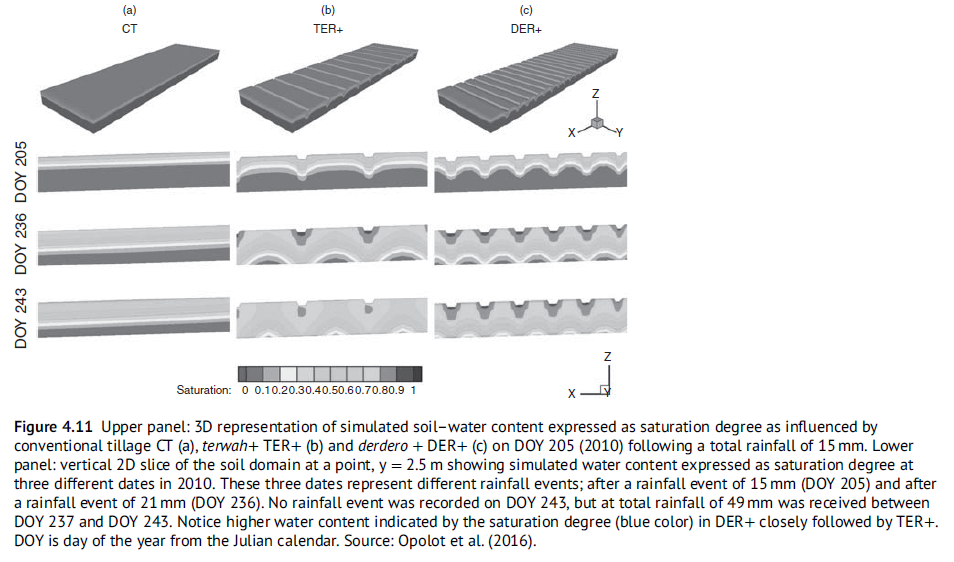HGS RESEARCH HIGHLIGHT – Fully Coupled Surface–Subsurface Hydrological Modeling to Optimize Ancient Water Harvesting Techniques
-
AUTHORS: Wim M. Cornelis, Koen Verbist, Tesfay Araya, Emmanuel Opolot, Jasmien C.J. Wildemeersch, and Bashar Al-Barri
We’re so proud that an entire chapter in the recently published “Handbook of Water Harvesting and Conservation: Case Studies and Application Examples” is dedicated to the modeling of ancient water harvesting techniques using HydroGeoSphere. In this chapter HGS was used to evaluate and optimize rain harvesting techniques across four case studies. Two of these case studies were from Chile, while the other two were in Ethiopia and Niger. The Chilean case studies evaluated the effectiveness of infiltration trenches (zanjas) in reducing surface runoff losses, promote recovery of natural vegetation and reduce land degradation. “In Ethiopia, the model was used to evaluate and optimize conservation practices with broad and narrow permanent beds, which are modified versions of locally called terwah and derdero systems.” And in Niger HydroGeoSphere models were used to evaluate several water harvesting techniques “include[ing] scarification, zaï pits, and microcatchments like semi-circular or half-moon bunds (demi lunes)”.
The study demonstrates clearly the benefits of integrated hydrologic modeling in the evaluation of various water harvesting and conservation techniques.
“With [HydroGeoSphere] being originally developed to simulate surface–subsurface water flow and solute transport at a larger watershed scale, this chapter describes the first attempts to apply it for evaluating and improving water harvesting techniques at the field and small watershed scale. Whereas water harvesting studies are often based on a trial and error approach or at best on an empirical approach, the approach presented here has many advantages and provides a better understanding of water flow processes at or near water harvesting techniques.”
This study was co-authored by researchers at UNESCO, Ghent University, University of Fort Hare and Makerere University. For more information please reach out to the main author Wim Cornelis (Professor in Agro-Environmental Soil Physics at Ghent University; wim.cornelis@ugent.be).
CLICK HERE TO READ THE ARTICLE.


